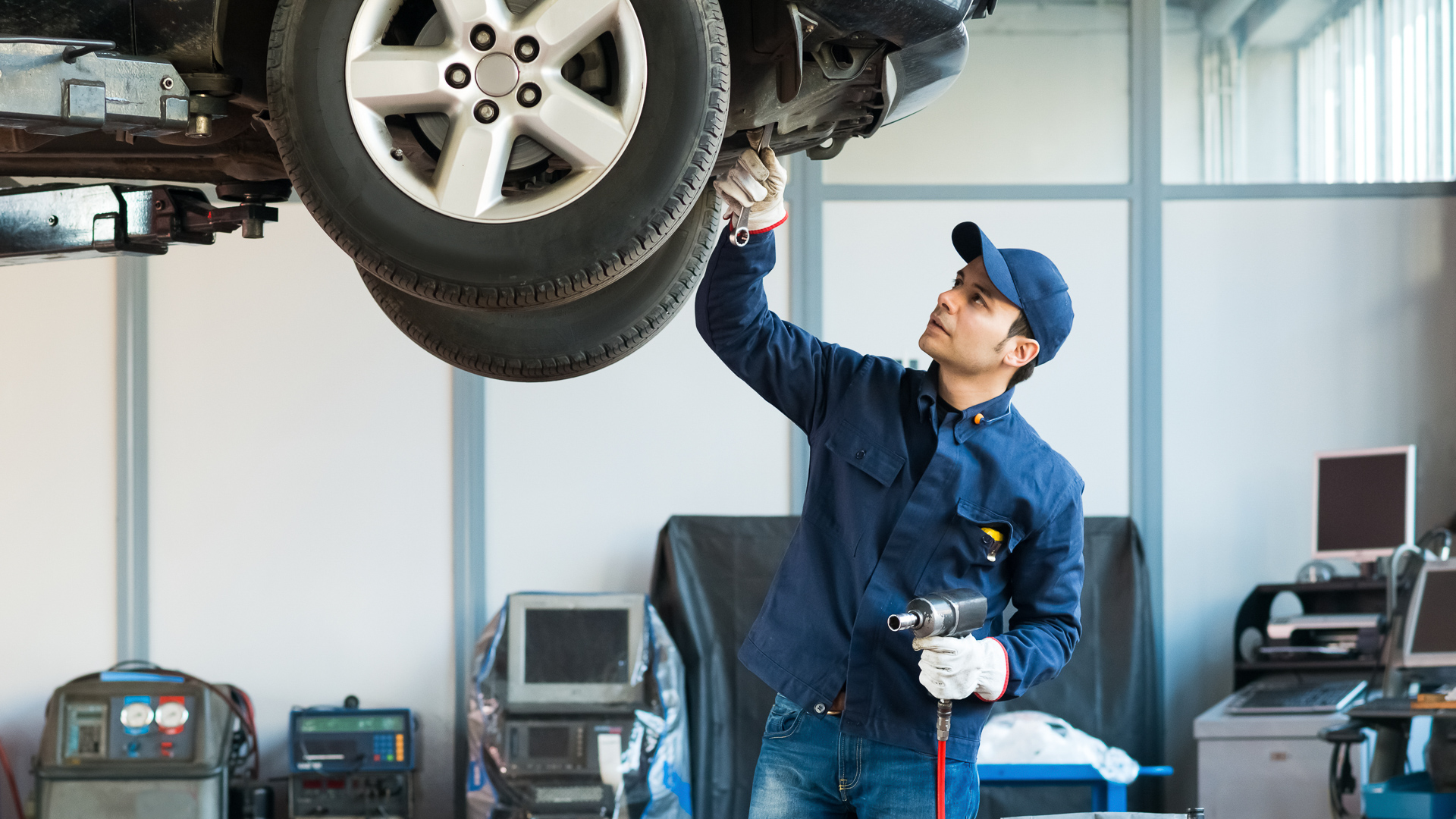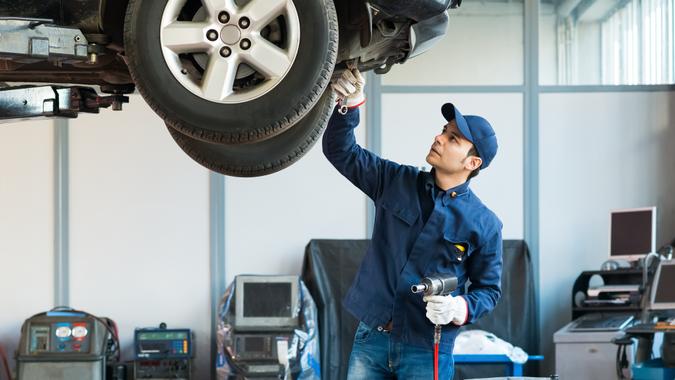This Unconventional Tactic Could Save You 85% on Your Next Car Repair


Minerva Studio / Shutterstock.com
The average age of a vehicle on the road today is 12 years, according to CARiD, so it’s likely you’ll need to make several visits to the repair shop over the course of those years. And depending on what needs to be done, these repairs can be pricey.
Tips: 9 Bills You Should Never Put on Autopay
Find Out: Here’s How Much Cash You Need Stashed if a National Emergency Happens
But there is a way to save big bucks on your next repair. According to CARiD data, if drivers purchase the needed parts, tools and chemicals online and do the work themselves, they can save up to 85% on average on a car repair.
What Repairs Are Safe To DIY?
Saving up to 85% is an appealing prospect, but it’s important that you only perform a repair yourself if you are confident you can do it safely.
“Any repair requires a certain level of safety precautions,” said Richard Reina, product training director at CARiD. “The easiest and safest ones to start with are things like checking tire pressure, replacing the interior cabin air filter, replacing a lightbulb or replacing wiper blades. They don’t require a lot of tools, and they don’t require working around a hot engine or jacking up the car. What I like about starting with these recommendations is that it builds a level of confidence.”
Once you get comfortable with these simple repairs, you can work your way up to performing your own oil change.
“Changing the engine oil is not a difficult thing to do, but it requires you to own a set of jack stands to properly and safely support the weight of the car before you slide underneath,” Reina said.
You Can Still Save by Buying Parts Yourself and Leaving the Repair to a Professional
If you don’t feel comfortable performing a repair yourself — or if it’s a more complicated repair that requires a professional — you can still save by buying the replacement parts needed and bringing them to the repair shop. Repair parts account for up to 77% of the total cost to consumers, according to the CARiD data.
Before doing this, however, it’s important to talk to your mechanic and see if they will allow you to buy the parts yourself.
“A lot of mechanics won’t do this, but a lot of mechanics will,” Reina said. “Having a relationship with a mechanic does increase the likelihood that they will accept getting a part from you. Having that conversation ahead of time adds to the credibility. It gets them to understand that you don’t see them as trying to rip you off, but you want them to understand that you’re just trying to save some money and maybe have dealt with this particular part source before.”
As for where to purchase parts if you get the OK from your mechanic, you have a few options that each have their own pros and cons.
Purchase Parts Directly From Your Car Dealer
“Your first inclination might be to go to the dealer. The advantage is potentially the dealer might be close to you, it might be where you bought your car and you’ll get brand-name parts,” Reina said.
And in some cases, this might be your only option.
“Depending upon the age of the car and depending on which part you’re looking for, it might be the only choice. The aftermarket might not have gotten around to producing the part that you need,” Reina said.
However, this is also likely the most expensive place to buy car parts.
Purchase Parts From a Brick-and-Mortar Aftermarket Retailer
Another option is purchasing parts from retailers like Pep Boys, AutoZone, Advance Auto Parts and NAPA Auto Parts.
“The great thing about them is they are very competitive with the car dealerships, and therefore will offer parts at a lower price than the car dealers will,” Reina said. “They will also offer a greater variety of different brands.”
Purchase Parts From an Online Aftermarket Retailer
“With the online retailers, you potentially get the widest variety of choices, you potentially get some of the best pricing, but you also have to consider shipping costs for the bottom line price,” Reina said. “Some places offer free shipping, some have a nominal charge for shipping. You have to take all that into consideration.”
Another thing to consider is how soon you need the new part.
“If you need the part today, buying online is not going to get you the part today,” Reina said. “The Toyota dealer or AutoZone, if they have the part on their shelves, I can drive there and get the part in an hour.”
Tips for Buying Car Parts
If you buy parts from a brick-and-mortar or online aftermarket retailer, it’s important to comparison shop and do your research to ensure you are not sacrificing quality to cut costs — after all, putting a faulty part in your car can be very dangerous.
“I typically advise people to start by looking for brand names you may recognize,” Reina said. “Some brand names are associated with the vehicle manufacturers. For example, Motorcraft is a Ford brand, Mopar is a Chrysler brand and ACDelco is a General Motors brand. I also tell people to look at the warranty. If a brand-name aftermarket part is selling for $100 and somebody is selling the same part for $30, that should bring up a red flag. How good is this $30 part compared to the $100 part? But look at the warranty. If the $100 part comes with a one-year warranty and the $30 part comes with the same warranty, maybe the risk analysis here makes it worth it.”
It’s also always a good idea to seek out advice.
“See if the online store has a phone number where you can call and talk to a sales representative so you can get some advice on what parts might be best for you,” Reina said. “Ask friends, acquaintances, co-workers or relatives if they shopped from an online business before or if they bought this brand before. There are also forums you can look at online. So a lot of it is doing some homework ahead of time.”
More From GOBankingRates
Source link





